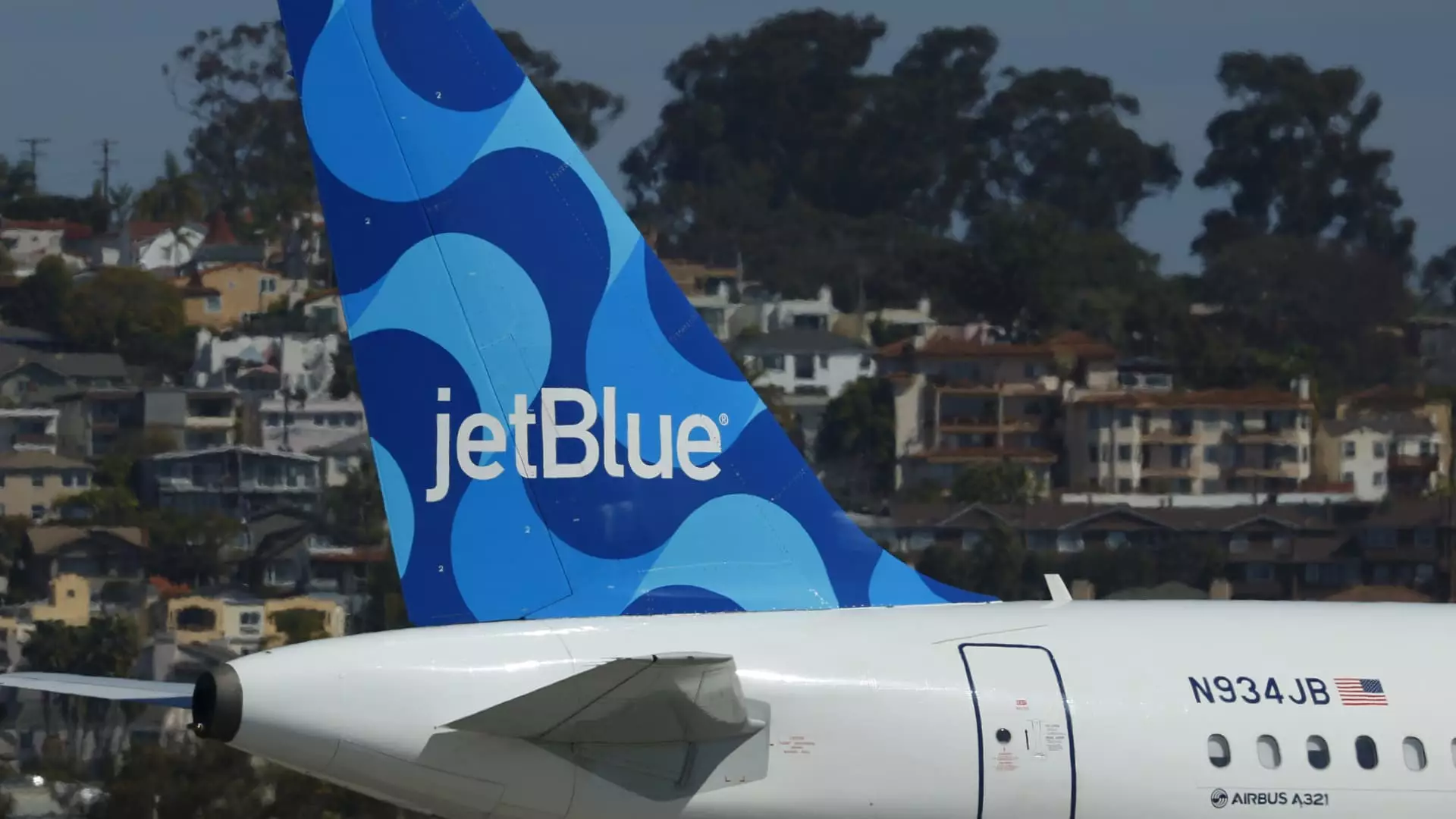JetBlue Airways is currently confronting a challenging landscape marked by disappointing travel demand, leading to a series of drastic cost-cutting moves as articulated by CEO Joanna Geraghty. In a candid note to staff, Geraghty expressed a grim outlook, describing the possibility of achieving break-even operating margins as “unlikely” for the year, and underlining the persistent reliance on borrowed funds to maintain operations. This stark admission highlights the volatile nature of the airline market, where fluctuating demand can dramatically impact financial stability.
The ramifications of weakened demand extend beyond just JetBlue. Many U.S. carriers are experiencing similar challenges, prompting them to announce plans to reduce capacity, particularly as travel bookings falter. A notable statistic underscoring this trend is the 7.3% decrease in airfares reported by the U.S. Department of Labor in May compared to the same month of the previous year. This overall drop in demand may signal a broader shift in consumer travel behavior, emphasizing the need for airlines to adapt speedily.
Strategic Downsizing: What’s Next for JetBlue?
To mitigate losses and navigate through this turbulent epoch, JetBlue is making strategic cuts. These include reducing off-peak flight schedules and discontinuing routes that are not yielding profits. Additionally, ambitious plans to refresh the interiors of older Airbus A320 jets have been paused, indicating a crucial pivot towards immediate financial viability instead of long-term investments.
Moreover, there are indications that JetBlue is reorganizing internally by reassessing its hiring practices and potentially consolidating leadership roles. While it is essential for any organization to streamline costs, excessive tightening could hinder future growth and service quality, particularly in an industry heavily reliant on customer satisfaction and innovation.
In the face of these operational challenges, JetBlue’s recent partnership with United Airlines offers a glimmer of hope. This collaboration enables passengers to book flights across both airlines and tap into their combined frequent flyer programs, presenting an opportunity to enhance customer loyalty and generate revenue amidst fierce competition.
Investing in the Future: A Renewed Focus?
Despite the immediate hurdles, Geraghty conveyed a determination to invest in key areas, such as incorporating premium-class seating and constructing airport lounges to create a more appealing travel experience for customers. These initiatives suggest that JetBlue is not merely resigning to its current struggles but is actively looking to revitalize its brand image and passenger offerings. The emphasis on providing a premium experience could capture the attention of travelers willing to pay a higher fare, particularly in a landscape where budget options are increasingly the norm.
While these investments may seem ambitious given the current financial constraints, they represent critical building blocks in JetBlue’s strategy for long-term recovery. The focus on premium services, alongside the development of partnerships, demonstrates a dual approach: addressing immediate financial shortfalls while laying the groundwork for a revitalized and competitive future.
Through these challenging times, JetBlue embodies the airline industry’s broader struggle, balancing cost management and forward-looking growth initiatives. As the landscape continues to evolve, the effectiveness of these strategies will be pivotal in charting a sustainable path forward in an increasingly competitive market.


Leave a Reply